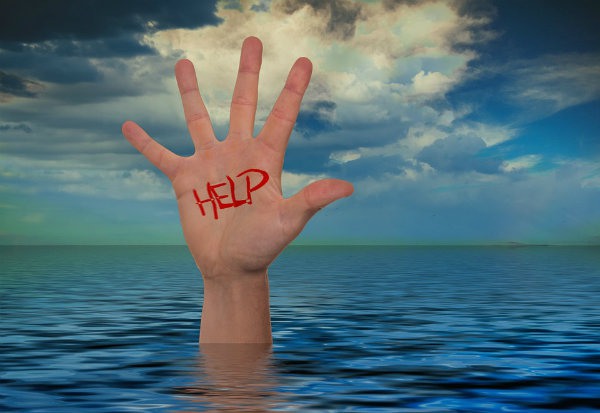How to Respond to a Distressed Swimmer

It wouldn’t be a summer without swimming, but for some, splashing around in the pool or any body of water can prove dangerous. According to the Center for Disease Control, on average 10 people die every day from drowning. So what do you do if you see a distressed swimmer? Here are a list of things that can help.
First, it’s important to be able to identify a distressed swimmer. A few things to check for, according to the American Red Cross, include seeing if the swimmer is making any forward progress. If they’re not, they could be only seconds away from being in danger of drowning. According to the Red Cross, an active drowning victim may have their bodies vertical but their hands pressing down urgently at their sides in an effort to keep their heads above water. If you see this, don’t assume someone is joking around—after all it’s better to be safe than too late.
If you do recognize a distressed swimmer, the first thing to do is to notify a certified lifeguard or first responder if one is around. While they attend to the distressed swimmer, it can be helpful to call 911 to have emergency personnel on standby. Once the distressed swimmer is safely on land, medical personnel, like those at Slidell Memorial, can check for signs of damage to vital organs which may still exist after a person seems safe.
To avoid situations where there’s no trained personnel available, swimmers should always stick to spots with lifeguards available and working. Should a swimmer become distressed in an area where there’s no lifeguards, it’s important to keep in mind how dangerous it is to save a distressed swimmer as well. Dozens die every summer trying to assist a fellow swimmer, whose panicked reflexes may result in the would-be rescuer being injured or killed as well. Should you reach a swimmer in distress, it’s important to keep their head above the water but their body controlled by yours so that they can’t accidentally harm you by pushing your head under water with flapping arms.
Once the swimmer is safe on dry ground, one thing that medical personnel may keep an eye on is secondary drowning or dry drowning, which is more prevalent in children but can also occur in adults. Symptoms of dry drowning include vomiting, fever, struggling for air and even mood swings, as Purva Grover, medical director of Cleveland Clinic Children's pediatric emergency departments, told USA TODAY. These symptoms may occur within up to 48 hours of the incident.
"You might not witness your child inhale any pool water, but it's important to watch out for signs soon after an event that could cause dry drowning," Purva told USA TODAY Network.
Another important way to help distressed swimmers is to be prepared. Taking a CPR class at your local community center, hospital or YMCA can ensure that should a near-drowning victim need emergency resuscitation, there’s someone there to assist.
Sometimes swimmers, even the best ones, may become distressed if caught in a rip current that strongly forces the swimmer out and stops them from coming in. If a swimmer is caught in a rip current, encourage them to swim calmly to either side until they are no longer being forced out further into the ocean and then swim to shore. For these situations, the most important part is to conserve energy by swimming away from the current instead of tiring yourself out by continuously fighting with the water.
The best way to help swimmers avoid distress is to make sure they have the skill set. If they’re too young, make sure to keep them away from the water. Swimmers should also consider a buddy system—drowning happens very quickly and having a buddy account for a swimmer’s well-being can get help there in a timely fashion. And parents, of course, should keep a close eye on young swimmers at all times. For adults, especially, it’s also important to check with a doctor that you’re healthy enough to swim.
With all of these tips, it’s time to hit the pool or the lake—it’s definitely hot enough for a swim.
